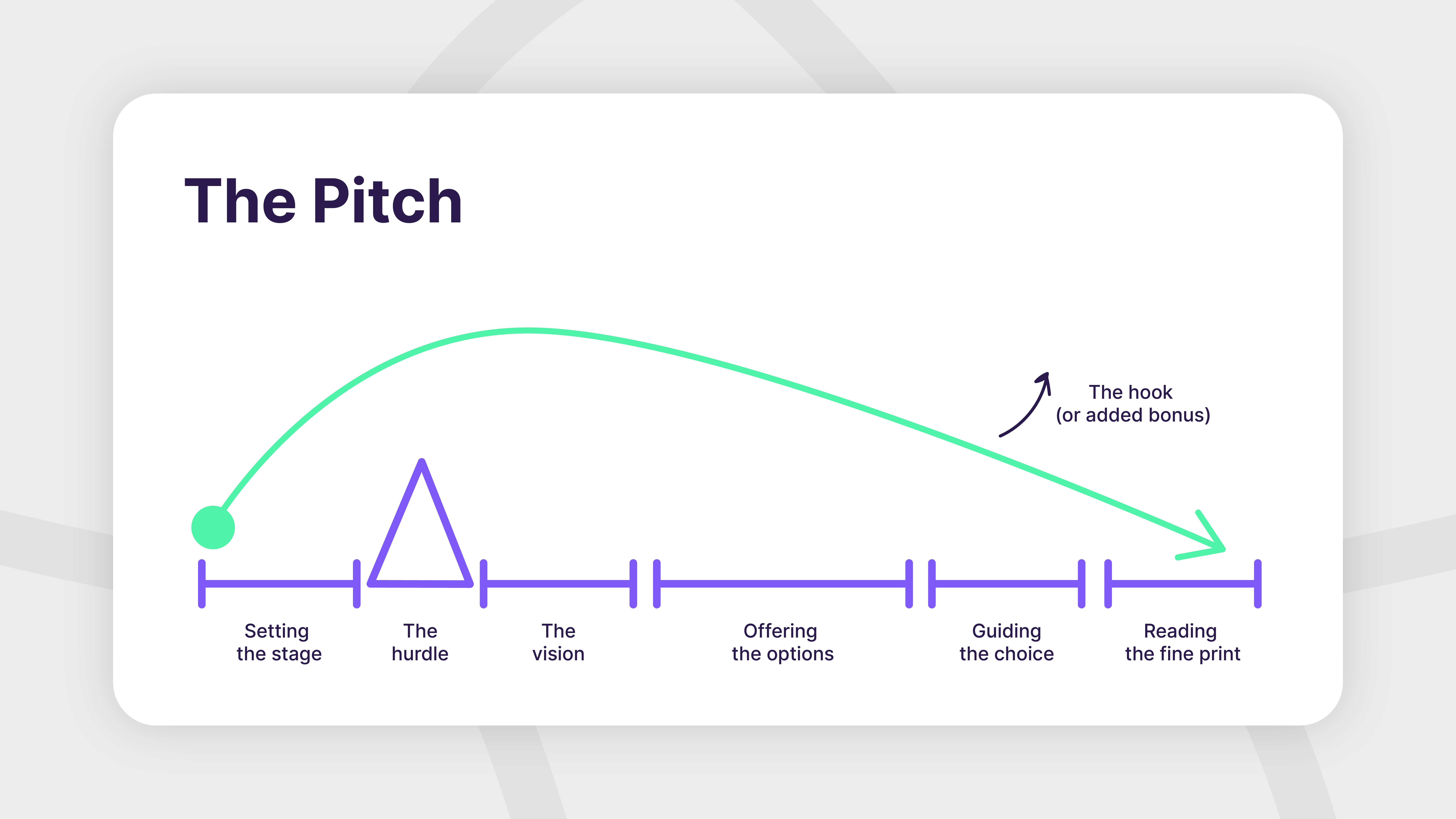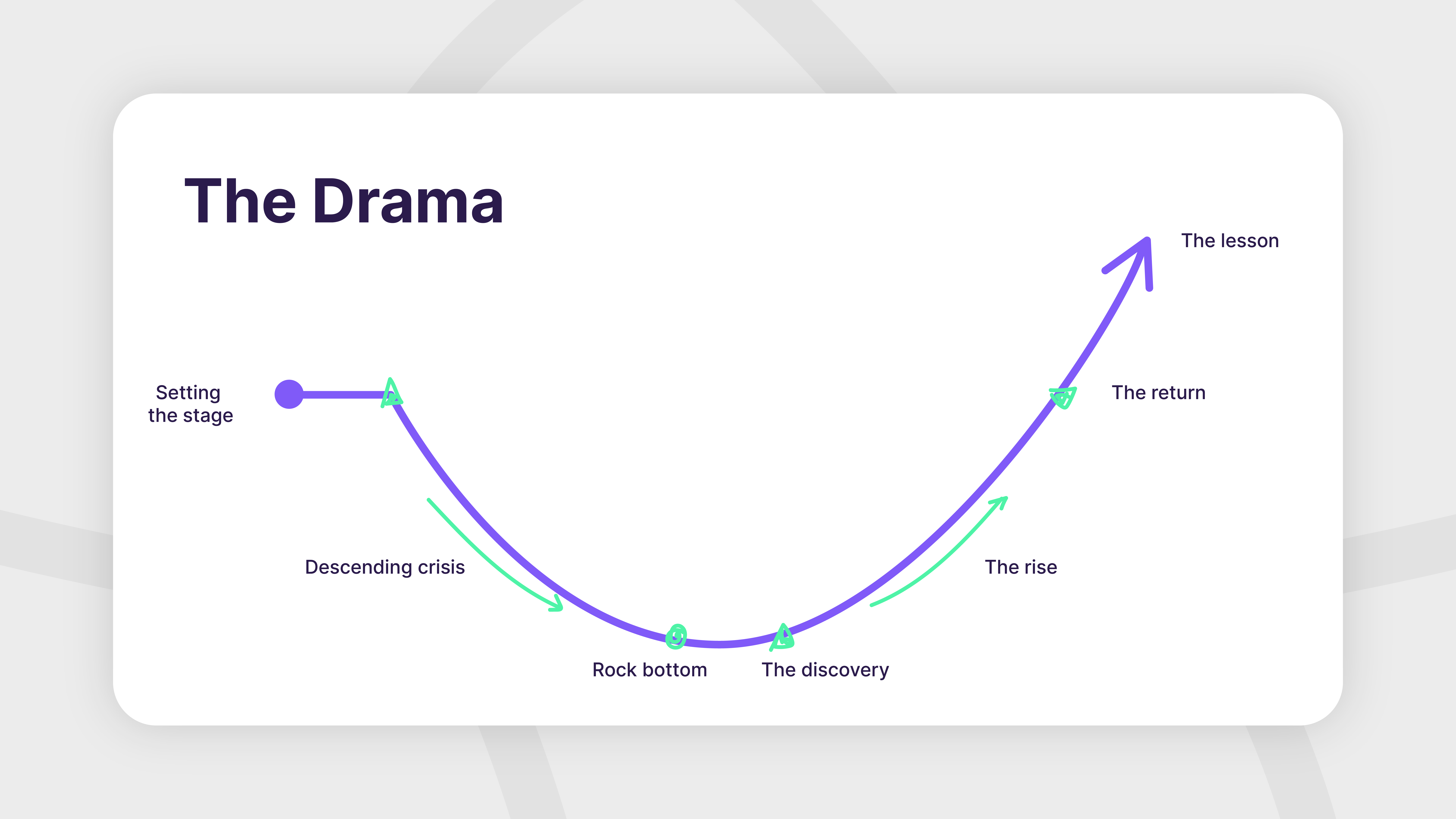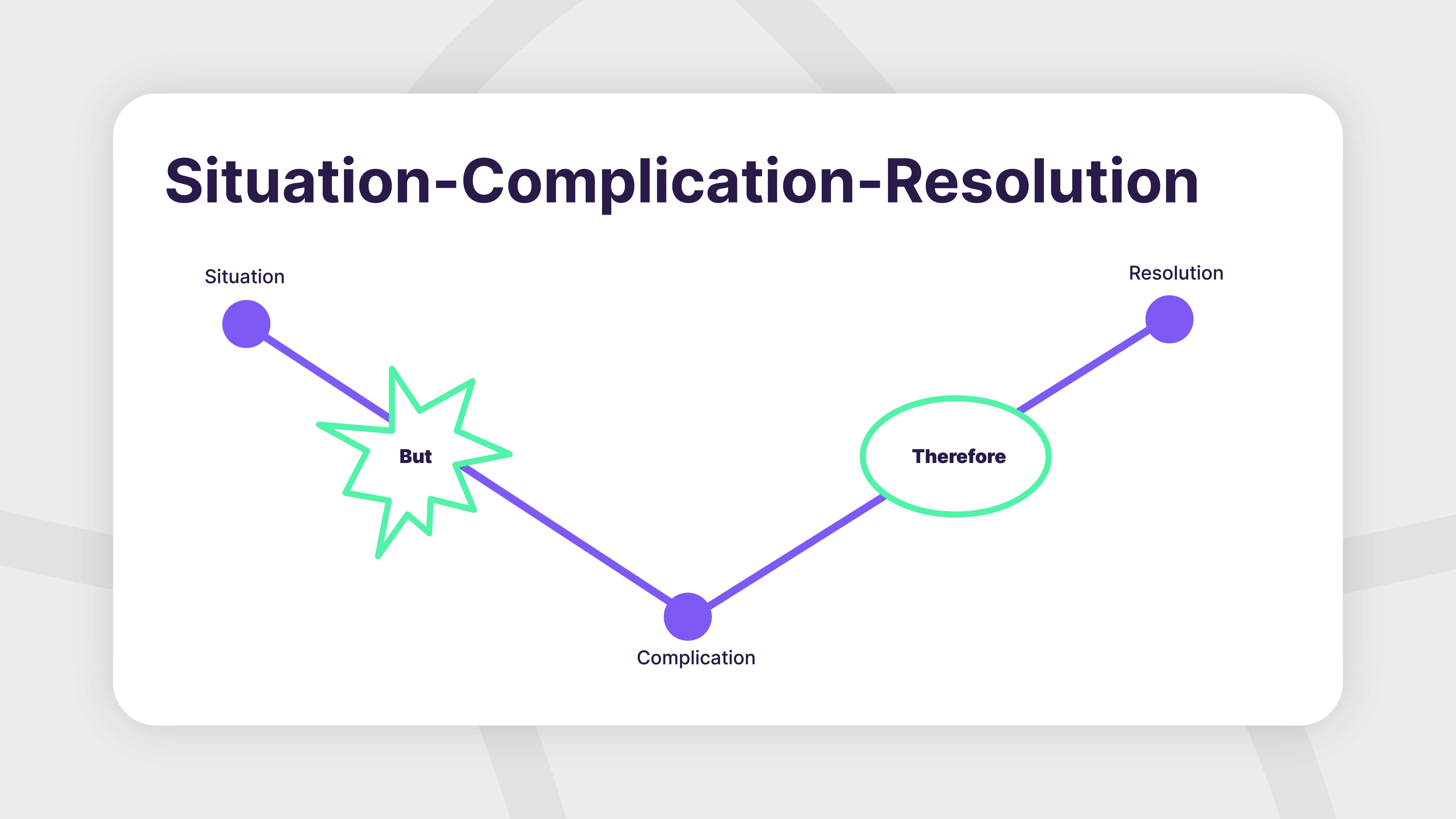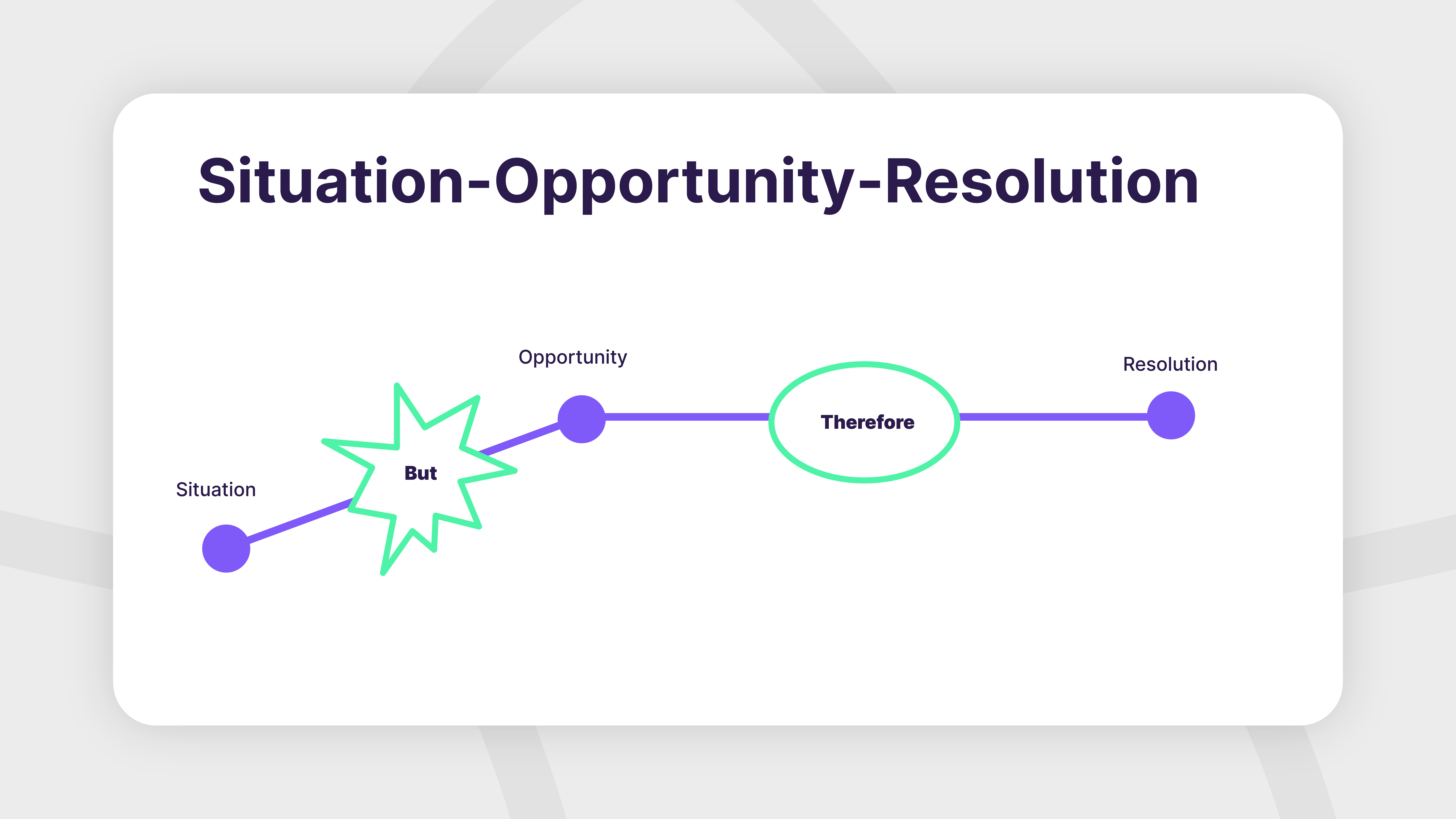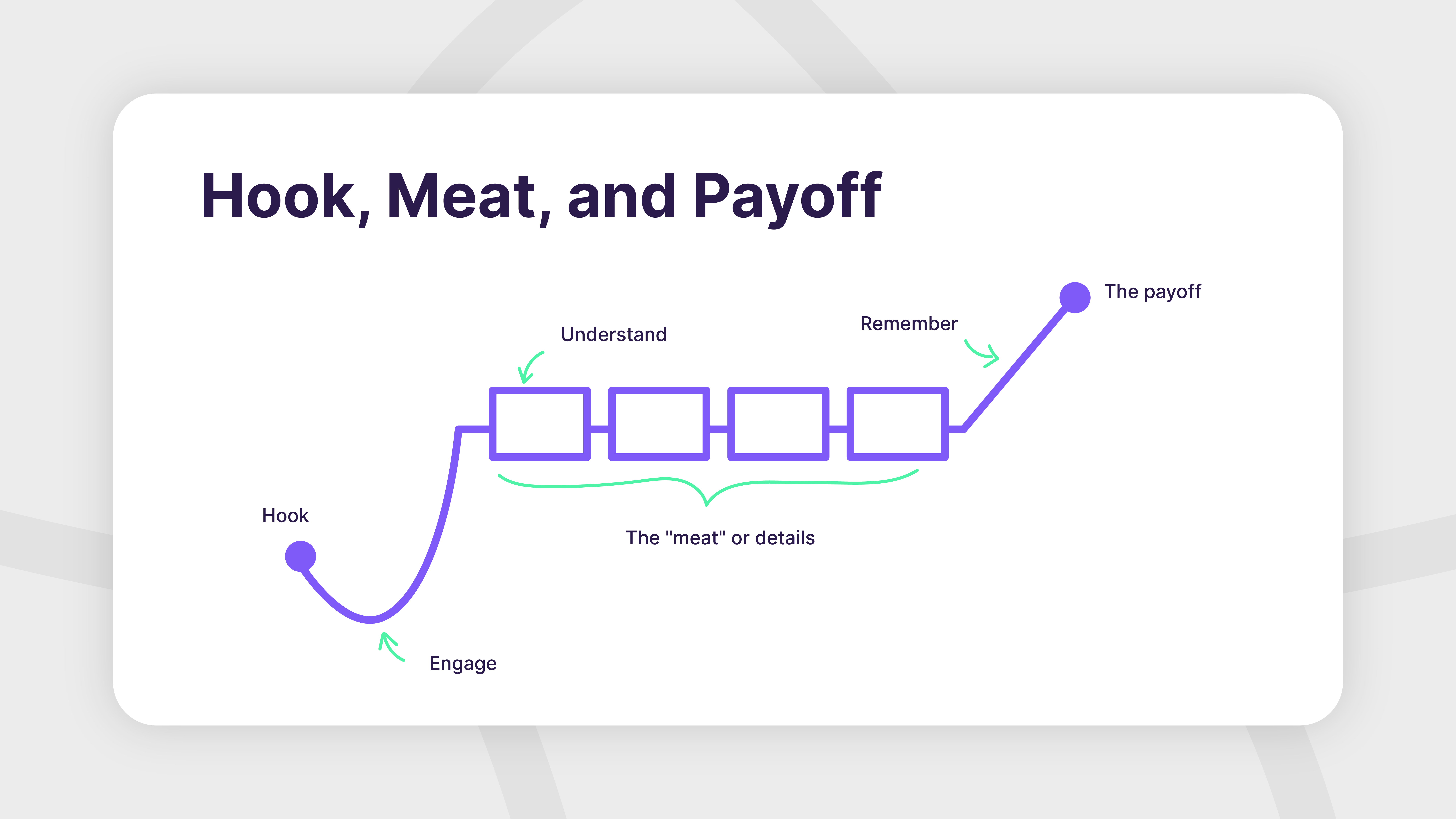09 May 2024
The most memorable part of any presentation is the story. Whether it’s a pitch, product, or consulting presentation, the narrative it shares stands out and retains the audience’s attention. Using a narrative arc is not only a storytelling device, but it is also a tool that organizes all your information into a more engaging format. Here, we’ll explore what is a narrative arc in a presentation, how to use it, and share effective arcs that leave an impact.
What is a narrative arc in a presentation?
When creating an effective presentation, embracing a narrative arc to tell your story is a transformative approach that makes your presentation more memorable and engaging. These arcs are not only confined to storytelling devices, they are strategic frameworks that construct and guide the audience through a structured journey. You are guiding the crowd from point A to point B, where the aim is to lead the audience to a specific action, whether it is an investment, support, or solution. To achieve this, mapping out the journey becomes an essential tactic to showcase key milestones. By fitting your ideas into an arc, you can ensure that each part of your presentation contributes to the ultimate goal, maximizing the impact of your main message.
How to use a narrative arc in your presentation?
Using a narrative arc in a presentation involves structuring your content as a story. To do so, you must first identify all the important details, best summed up as context, conflict, character, and closure. These are the core elements that must be found in any presentation story and within your data. From there, you begin to arrange and fit these elements to build them into a compelling story. The different storytelling arcs discussed below will all feature these elements in one form or another, and the task becomes fitting them into their respective spots.
Different narrative arcs for presentations
Many narrative outlines help develop compelling stories, here we discuss 6 classic structures that work for any presentation within a professional or corporate session:
The Explanation 
The explanation narrative arc is a storytelling framework that is best for presenting information, especially when the goal is to share new knowledge or teach a new skill. It is meant to provide a roadmap to structure information for the audience as a learning journey, from meeting them where they are to reaching a new level of understanding.
Structure: The lay of the land, the roadmap, the first step, the next steps, almost there, the arrival.
When to Use This Arc: The explanation narrative arc is useful for presentations that aim to educate, like workshops or training sessions where the objective is to explain complex concepts. This framework helps the audience visualize the learning process as a journey and makes it easier for them to follow along and retain information.
Example:
A new accounting software feels overwhelming and complicated, and staff had previously struggled to use it (the lay of the land). So, you navigate its features and go through them step-by-step (the roadmap), but first, you set up a profile as an example and customize it (the first step). Then, you will explore the process of creating invoices and managing data (the next steps). After that, you will explain how to generate reports (almost there) and lead the audience to be more confident in the software (arrival).
The Pitch
The Pitch is a storytelling structure that aims to grab attention, propose solutions, and secure yeses. It weaves a compelling narrative around the problem you want to solve.
Structure: Setting the stage, the hurdle, the vision, offering the options, guiding the choice, reading the fine print, and hook (or added bonus).
When to Use This Arc: This arc shines best when you need to present a new idea, solution, or product. It is ideal for sales pitches, investor presentations, or any other situation where the aim is to win over an audience or stakeholder.
Example:
A busy logistics company is struggling with rising fuel costs (setting the stage), considering that current delivery routes are inefficient and lead to missed deadlines and wasted fuel (the hurdle). But with an optimized delivery system, the company can save fuel and ensure punctual deliveries (the vision.) They can either stick with the current routes and accept the fuel costs, or use AI-powered route optimization software (offering the options). The software analyzes traffic patterns and creates fuel-efficient routes, boosting savings and customer satisfaction (guiding the choice). It only requires an affordable monthly subscription and integration within the current systems (reading the fine print), plus, a free trial to see the 20% reduction in fuel costs yourself (the hook).
The Drama
Loosely based on the hero’s journey, the Drama arc inspires the audience to embrace a new belief or way of looking at the world by connecting with them on a more emotional level.
Structure: Setting the stage, descending crisis, rock bottom, the discovery, the rise, the return, and the lesson.
When to Use This Arc: The Drama arc is best for presentations aiming to inspire change or a new way of thinking, such as product launches that address a need, social initiatives, or innovative solutions that challenge existing perspectives.
Example:
Many businesses tend to underestimate the threat of cyberattacks (setting the stage), in fact, a recent data breach negatively impacted a competitor in the industry (descending crisis). Businesses could face unfortunate financial ruin and a damaged reputation (rock bottom). However, advanced cybersecurity solutions offer protection and rapid response capabilities (the discovery), and businesses that implement these solutions can build a strong defense against any potential cyber threat (the rise). Companies can then operate confidently with the knowledge that their data is secure (the return), proving that cybersecurity is a crucial business investment for a company (the lesson).
Situation-Complication-Resolution
In the fast-paced consulting and B2B sales worlds, this storytelling arc cuts through the noise and effectively presents solutions. This three-act story structure allows the presenter to quickly identify all the important points, linking them with “but” and “therefore” for a logical flow that guides the audience.
Structure: Situation, complication, resolution.
When to Use This Arc: This logical and straightforward arc is ideal for consulting presentations where clarity and conciseness are crucial. It is an effective structure for proposing solutions or B2B sales pitches where a strong value proposition is needed.
Example:
Many companies rely on paper-based inventory management, usually stored in file cabinets and office drawers (the situation). But, inaccurate inventory causes wasted resources, lost sales, and frustrated customers (the complication). Therefore, implementing a cloud-based inventory management system would help streamline data, provide data insights, and boost overall efficiency (the resolution).
Situation-Opportunity-Resolution
The business world thrives by capitalizing on opportunities, which makes this storytelling arc the perfect place to highlight them. This arc builds on the previous example but with a more positive twist by replacing the complication with an opportunity.
Structure: Similar to the previous arc, the situation, opportunity, and resolution.
When to Use This Arc: This optimistic structure is perfect for situations where you want to inspire action and showcase growth potential. It can be used to present strategic plans or sales opportunities that maximize value.
Example:
The current product line has a loyal customer base, but market saturation hinders sales growth (situation). But, there are emerging trends in the fitness industry that tell us that there is a preference for personalized workout experiences (the opportunity). Therefore, we can introduce a fitness tracker app that provides users with workout plans and progress reports. This allows us to reach a new market segment and ignite sales growth (the resolution).
Hook, Meat, and Payoff
Frequently used by consultants to engage the audience, the hook, meat, and payoff arc crafts presentations that are both engaging and memorable. This formula is easy to follow and ensures the audience is engaged right from the start with a hook and leaves them with clear steps to follow.
Structure: Hook, the “meat” or details, and payoff.
When to Use This Arc: The appeal of the hook, meat, and payoff arc is in how versatile it is. It can be useful for training sessions, client presentations where complex ideas are explained, or internal team meetings where you wish to propose a new direction.
Example:
Some social media posts go more viral than others, but why (the hook)? Successful social media marketing requires targeted use of strategies, engaging content types, and effective posting schedules (the meat). These elements would help craft a social media plan that boosts brand awareness and drives results (the payoff).
Incorporating a narrative arc into your presentations ensures that your message is felt by the audience, not only heard. It turns standard communication into impactful stories that boost the presentation’s persuasive power. By allowing these arcs to shape your slides, you can begin creating impactful, engaging, and inspiring presentations. At Prezlab, we specialize in creating presentations that do your ideas justice by telling your story right. You can always reach out to our team to learn more!





